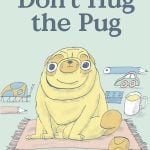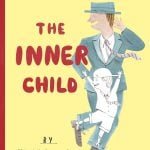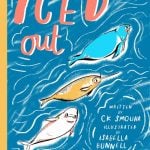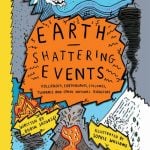We’re thrilled to have author and illustrator Katie Brosnan in The Reading Realm to talk about her fascination with microbes and her wonderful brand-new book Gut Garden, which is published by Cicada! Gut Garden is currently shortlisted for the Royal Society Young People’s Book Prize, for the North Somerset Teacher’s Book Award, the UKLA Book Awards and the School Library Association Information Book Award!
Without giving too much away, can you tell us a bit about your new children’s non-fiction book Gut Garden?
Gut Garden takes you on a journey to learn all about your body’s digestive process and the incredible ecosystem that lives inside you – your gut microbiome!
I know you worked alongside Dr Deborah Jessop and Dr Arif Hussain to create this book – how did this work?
I worked on the text with my brilliant editor at Cicada Books. Once the text was ready, Dr Deborah Jessop and Dr Arif Hussain were a great help in reading and checking it was as accurate as it could be.
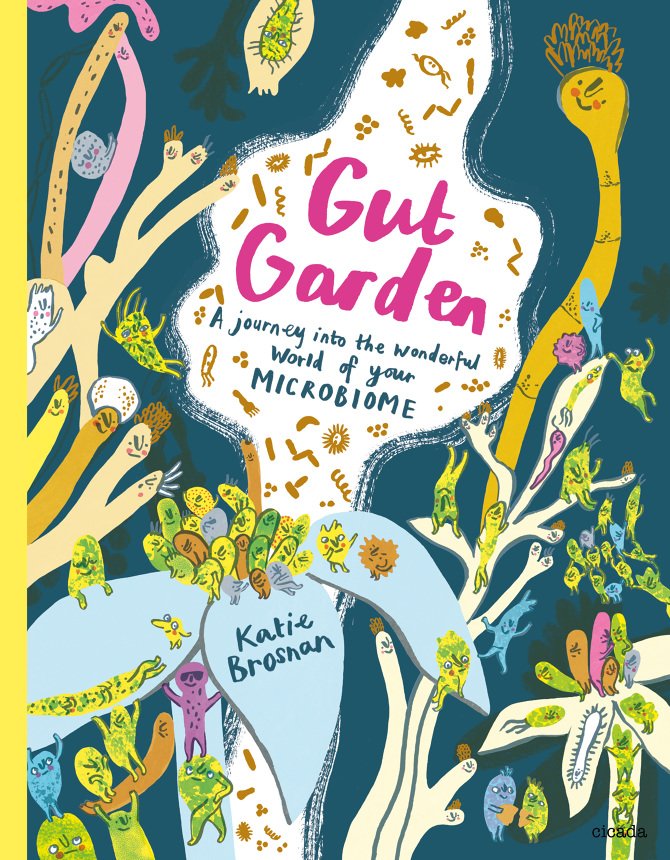
What started and inspired your love of science and microbiomes?
I have loved nature and science since I was young, recently I became interested in microbes through the process of making my own fermented foods.
Learning about symbiosis in nature definitely inspired me, we play host to microbes and function in partnership with them. It’s great to think about it like this as it really puts things in perspective, in many ways we rely on these tiny microbial life forms, but microbial life existed before us and will exist long after we’ve gone too. It’s utterly fascinating, once I started reading more I couldn’t stop.
Do you have a favourite fact about microbes and the human body?
I love the fact that our microbiomes are unique, even if you live in the same house, are part of the same family and share the same diet, your microbiome will be different from the next person, it’s a bit like a fingerprint in that sense.
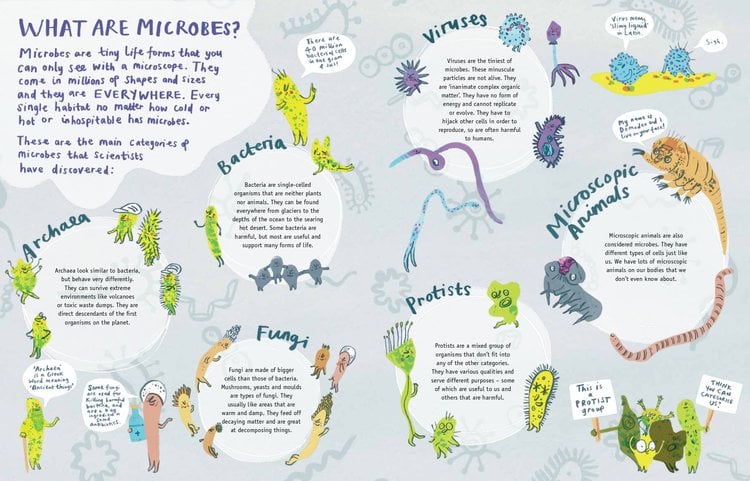
The book is incredibly accessible – it’s engaging and easy to follow and understand. How did you achieve this? Was it difficult to translate this tricky topic into such a fabulous book for children?
The large intestine is the heart of the gut microbiome (where 99% of your gut microbes live), this made me imagine a diverse garden and gave me the title and the main steer of the book. My initial idea was to have a main tour guide microbe and a sidekick who would lead the reader through the body, this evolved into a journey through the digestive process and lots of microbes informing you along the way. It was really important to keep zooming back out into a human context to try to keep the information relevant to the reader. The editing process was hugely important, I went on a journey to make it as digestible as possible collaborating with my editor, who really helped shape the book.
The growth in illustrated non-fiction has opened up the genre and it’s exciting to see more playful use of the form. Real life microbes definitely don’t have arms, legs or indeed faces but by making them characters, many of whom reappear at different stages of the journey I hoped it would make the subject more accessible, fun and enable the reader to see them as life forms.
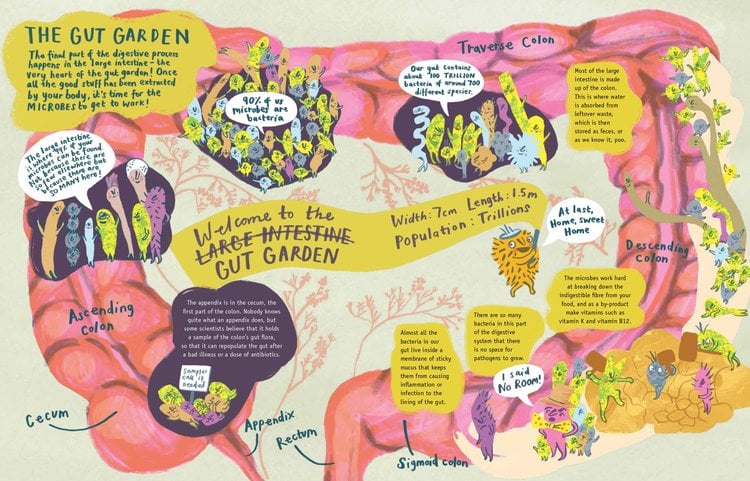
Can you talk us through your illustration process? What materials do you use? How long, roughly, does one double page spread take to design?
I always start off a project by drawing from life, I drew at the microbe museum Micropia in Amsterdam which helped me to come up with ideas for the images in the book, the scientist near the beginning of the book is actually from a drawing I sketched at the museum. The microbe characters themselves were really fun to draw and came naturally through playing with drawing from photographs of real microbes.
I worked on the roughs for the book in pencil and pen and have started to use an ipad to help with planning the layout. When making the final artwork I settled on using pens with variable nib widths that behave a bit like brushes for the line and handwritten text, I wanted the drawing to have lots of energy and a liveliness to illustrate this wild, diverse garden inside of us. I made hand painted and textured layers using techniques including marbling and cardboard printing and scanned these in. I think handmade techniques help to keep the work alive and tactile. After mixing a colour palette with physical paints, I coloured the layers digitally and overlaid them to form other colours mimicking screen-printing. So my process is really a mix of handmade and digital techniques.
The length of time it takes to make a spread varies depending on detail and content, I would say it takes a couple to a few days at least per spread after roughs are finalised. I was lucky to have a designer working on the book too, so this really helped, I had previously only worked on fiction picture books, so it was a great learning curve.
How has technology changed the way you illustrate and design books?
Technology has helped to speed up my process, I use an iPad to help with the rough stage of a book project, and photoshop and InDesign for compiling, editing and layout of final artwork. I’m trying to find a happy balance so I can work more quickly with technology but still experiment with physical materials. I love tactile forms of making artwork from screen prints, to ceramics and collage, they enable you to use your brain more playfully, which is great for creativity but digital processes can be playful to use too.
What are your fondest memories of being taught science at school?
My fondest memories are of being surprised by the results of practical experiments, they planted the seed that science is about discoveries, trusting a process rather than assumptions which translates really well into art and illustration practice too. I also remember the exciting element of danger using Bunsen burners in the lab and the mildly explosive results when mixing chemicals! Experiments in science and art help us learn so much about ourselves and the world around us.
Explore more books from Cicada here!
